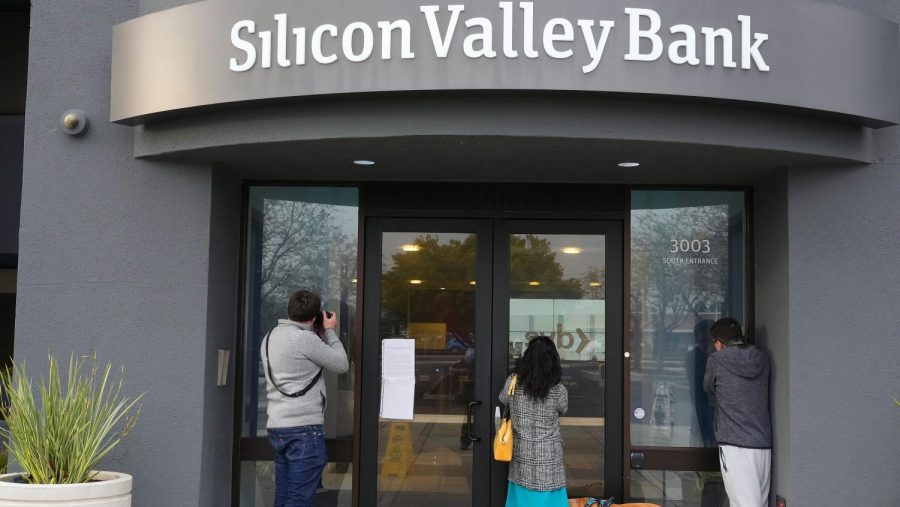SVB Collapses
March 15, 2023
Silicon Valley Bank, which recently collapsed, was once well-regarded among the tech community in the San Francisco Bay Area. The bank’s focus on providing banking services to tech startups in Silicon Valley made it a trailblazer in the industry. However, for those outside of the tech space, Silicon Valley Bank was not a household name.
The bank was started in 1983 by Bill Biggerstaff and Robert Medearis after being conceived over a game of poker. Its first office was in San Jose, California, and it gradually expanded around Silicon Valley and then to the East Coast in 1990 with an office in Massachusetts. In the 1990s, the company opened offices across the United States and backed young tech startups during the dot-com bubble of the ’90s.
In 1987, the company began trading stock on Nasdaq and completed its IPO in 1988, raising $6 million in equity. After narrowly avoiding disaster when the dot-com bubble burst and its stock fell more than 50% in 2001, the bank continued to expand its operations, opening offices in Israel in 2008, a U.K. branch, and a joint venture in China in 2012. It also expanded into Europe and Canada in the last decade.
The bank even expanded to capitalize on the ties between the tech community’s apparent love for California wine. SVB’s wine practice “accounted for 6% of the bank’s $14.6 billion gross loan portfolio” in 2015, according to The Street.
By December 31, 2022, SVB held $209 billion in assets and $175 billion in deposits, according to regulators. SVB said on its website at the time that “44% of U.S. venture-backed technology and healthcare IPOs bank with SVB.” It was among the top 20 largest banks in the country.
However, SVB was not a typical lending institution. While most commercial banks prefer proven clients, SVB likes to cement relationships with companies when they are economic toddlers, according to a 1995 article from SFGate. The bank built strong relationships with the venture capital community and was unique in really understanding and trusting its clients and building relationships with these companies, venture capitalists, and entrepreneurs.
SVB’s relationships with its clients meant long-term referrals to other people looking to get their own startups off the ground and expand into private banking to wealthy clients. SVB also had around 90% of its accounts with more than $250,000 in deposits, which is “higher than your typical bank,” said San José State University Assistant Professor Matthew Faulkner.
Starting in 2020, around the time of the pandemic, SVB’s deposits skyrocketed, as The Indicator From Planet Money explained. However, this ended up being a big problem when its extra billions were invested in Treasury bonds with long-term maturities and the Federal Reserve started raising interest rates. The bank’s focus on a single industry and its high concentration of deposits ultimately led to its collapse.
The collapse of Silicon Valley Bank has had a unique impact on the San Francisco Bay Area, where it was headquartered. “We’re in the middle of it. You could feel the mania and the panic and the concern and the interest,” said Faulkner. The bank’s collapse has highlighted the risks of relying on a single industry and the need for diversification in the banking sector.
“In SVB’s case, this ended up being a big problem when its extra billions were invested in Treasury bonds with long-term maturities and the Federal Reserve raised interest rates, which in turn hurt the value of government bonds. And with the tech sector struggling recently, more depositors took their money out.
Last week, SVB said it was forced to sell part of its bond holdings at a loss of $1.8 billion, leading to a run on the bank. Federal regulators took control of the bank on Friday.
“ ,” said Faulkner.”












